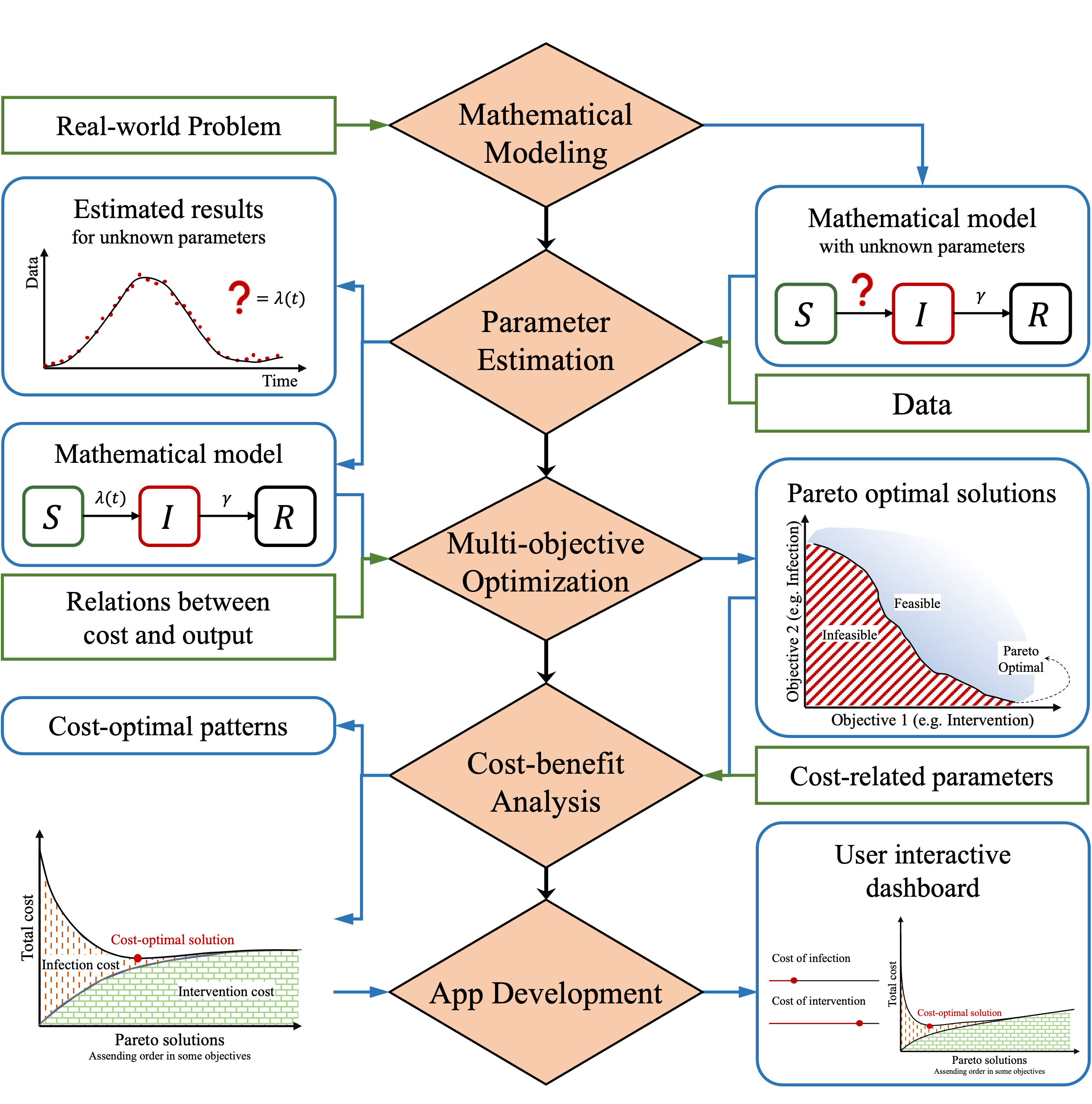Cost-Optimal Intervention Strategies for Infectious Diseases
This dashboard supports evidence-based policymaking during infectious disease outbreaks. It integrates mathematical modeling, multi-objective optimization, and cost-benefit analysis to suggest cost-optimal transmission reduction strategies.
📌 Research Framework
- 1. Mathematical Modeling
- 2. Parameter Estimation
- 3. Multi-Objective Optimization
- 4. Cost-Benefit Analysis
- 5. Interactive Dashboard

🧪 Dashboard Features
- Adjust cost-related parameters; GDP, VSL, fatality rate, etc.
- Visualize Pareto-optimal and cost-optimal intervention strategies
- Compare infection and intervention costs
- Explore cost-optimal patterns across different assumptions
⚙️ Model Assumptions
The dashboard uses a SEIQRD compartmental model fitted to early COVID-19 epidemic of the Republic of Korea. Intervention policies are estimated using IMODE and MCMC. Cost functions assume proportional or nonlinear relationships between intervention intensity and societal costs.
📊 Default Parameters; Korea
| Parameter | Default |
|---|---|
| GDP per capita | 31,902 USD |
| GDP reduction | 4.26% |
| VSL | 1,751,311 USD |
| Fatality rate | 1.73% |
🛠️ How to Use
- Adjust parameters in the left panel.
- View cost and intervention results in the right panel.
- Identify cost-optimal policies; marked with green square.
🔗 External Links
🎓 Acknowledgements
This research is supported by the Bio\&Medical Technology Development Program of the National Research Foundation (NRF) funded by the Korean government (MSIT) {RS-2023-00227944}. This paper is supported by the Korea National Research Foundation (NRF) grant funded by the Korean government (MEST) {NRF-2021R1A2C100448711}. The dashboard is developed by researchers at Konkuk University and University of the Philippines, Diliman.
👥 Demography-related parameters
🦠 Disease-related parameters
🏛️ Policy-related parameters
💰 Cost-related parameters
Parameters in this model are classified by 4 group.
- demograpy-related parameter
- disease-related parameter
- policy-related parameter
- Economy-related parameter
Demograpy is a population of the country
Disease-related parameters are the chracteristics of the disease. For example, reproduction number $R_0$, latent period $\kappa$, infectious period $\alpha$, recovery period $\gamma$, and fatality rate $f$.
Policy-related parameters are the effect of intervention policy. For example, imported cases $\xi$ and transmission reduction $\mu$ are changed by the intervention policy.
Economy-related parameters determine the intervention cost and infection cost. For example, GDP determines the intervention cost and VSL determines the infection cost.
dd